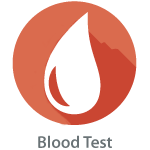Prostate & PSA Check




Detect problems before they become troubles.
Our first line health profiles are specifically tailored to provide a picture of how various aspects of the body is looking, functioning and performing.
The prostate gland is usually the size and shape of a walnut and grows bigger as you get older. It sits underneath the bladder and surrounds the urethra which is the tube men urinate and ejaculate through.
Its main job is to help make semen which is the fluid that carries sperm.
What is the Purpose of this Health Check?
This proactive health check includes an ultrasound scan & a blood test which measures Prostate Specific Antigen (PSA). The scan is a basic check of the prostate & will determine the size (volume) and shape of the gland. It is carried out over your tummy
PSA is a protein produced by the prostate. It is normal for all men to have a small amount of PSA in their blood, and this amount rises as you get older. But a raised PSA level may suggest you have a problem with your prostate, including:
· Enlarged prostate
· Inflammation or infection of the prostate called prostatitis
· Urine infection
· Prostate cancer.
A raised PSA level does not necessarily mean you have prostate cancer. Other things can also cause your PSA level to rise. If you have a raised PSA level, then we would strongly recommend discussing the results with your GP for further action.
Note: A scan or blood test alone cannot determine prostate cancer and can not check for all abnormalities. Advice should be sought from your regular health care professional prior to booking this assessment.
How do I Prepare for this Test?
- A full bladder is required for the ultrasound scan – Please drink 1 litre of fluid approximately 1.5 hours before your scheduled appointment and please try your best not to empty your bladder before the examination.
- You may eat as normal
- You may maintain your normal medication
What Does The Assessment Involve?
As part of the assessment you will undergo ultrasound scans & blood tests. For the ultrasound scan you will be asked to uncover your scrotal area. A small amount of jelly will be placed over your scrotum. An ultrasound camera will then be placed on top and moved along. This will result in a picture appearing on the ultrasound monitor and patient TV which will be translated by a medical ultrasound practitioner. The examination itself usually lasts around 10-15 minutes and is pain free. At the end of the examination a brief explanation of the results may be offered. A formal ultrasound scan report with any recommendations will be sent to you which you can take to your regular healthcare professional.
This blood test is just like a standard blood test.
Note:
- Blood results require interpretation. All results should be interpreted by your regular health care professional / GP.
- We will require details of your GP / Health Care Professional, which may be requested prior to or at the time of the scan.
- This scan requires access to the area of interest, therefore it is recommended to wear loose clothing to facilitate this process.
- Study images may be available at an additional charge – more information and to request this can be found by clicking here.
All our first line ultrasound scans are optional. You must be at least 16 years old and you should have no existing medical condition or treatment pending that relates to the scan you are booking. If you are in any doubt about having any type of scan, you should consult your GP.
Regular Price
£179
£30 Booking Deposit Required.
Terms and Conditions apply.
.
Call Me Now